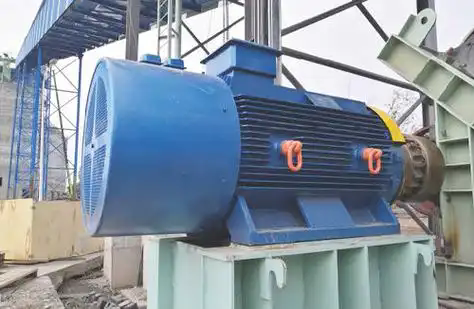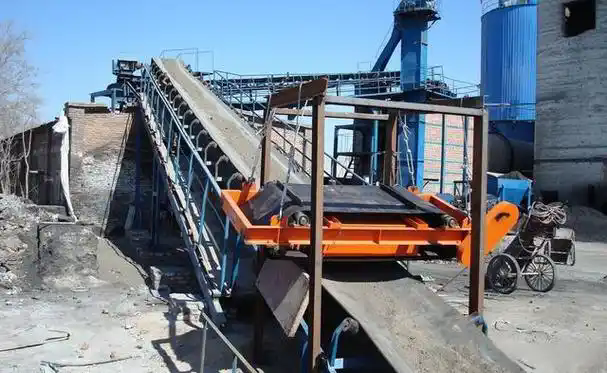Permanent magnets for belt conveyors are critical components in material handling systems, widely used in industries like mining, food processing, recycling, and more. These magnets are designed to remove ferrous contaminants from the conveyed material, ensuring the quality and safety of the final product. The effectiveness and efficiency of permanent magnets have made them indispensable in improving the performance of belt conveyor systems.
Functionality and Working Principle
The primary purpose of a permanent magnet on a belt conveyor is to attract and remove unwanted ferrous materials (such as iron, steel, or other magnetic metals) from the bulk material flowing on the conveyor belt. These contaminants can be harmful to both the conveyor system and the final product. Permanent magnets are preferred because they do not require external power sources, unlike electromagnetic or electro-permanent magnets.
Permanent magnets operate by generating a constant magnetic field through the use of materials like neodymium, samarium-cobalt, or ferrite. The magnet's field interacts with ferrous objects, pulling them away from the conveyor belt and onto a separate discharge area or collection tray.
The most common types of permanent magnets used in belt conveyors include:
- Magnetic pulleys: Installed at the head or tail of the conveyor, these pulleys have embedded permanent magnets that attract ferrous materials as the conveyor belt passes over them.
- Magnetic drums: Similar to pulleys but with a cylindrical shape, they perform a similar function by drawing out ferrous materials as the material moves along the conveyor belt.
- Suspended magnetic separators: These magnets are placed above the conveyor belt and attract ferrous contaminants from a distance, typically used when ferrous materials are not directly in contact with the magnetic system.
Key Benefits of Permanent Magnets for Belt Conveyors
- Energy Efficiency One of the most significant advantages of permanent magnets is their energy efficiency. Unlike electromagnetic systems, which require continuous power supply to generate a magnetic field, permanent magnets do not need an external power source. They generate their magnetic field naturally and continuously, reducing operational costs and enhancing energy savings.
- Maintenance-Free Operation Permanent magnets are largely maintenance-free, as they do not have moving parts that require lubrication or regular replacement. Their durable construction allows for long-lasting use, which is ideal in demanding environments like mining or recycling plants.
- High-Performance Separation Permanent magnets provide a powerful magnetic field that can efficiently remove ferrous contaminants from the material being conveyed. They are highly effective at ensuring product quality by keeping metal particles out of the finished product, preventing contamination that could affect product integrity or cause damage to downstream processing equipment.
- Improved Conveyor System Lifespan By removing potentially harmful ferrous metals, permanent magnets help reduce wear and tear on the conveyor belt and associated machinery. This extends the life of the entire system and minimizes downtime due to repairs or maintenance.
- Versatility Permanent magnets can be used in a variety of belt conveyor setups, both in dry and wet environments. They are highly versatile, adaptable to different material types, and can work in various industries like mining, food processing, recycling, and woodworking.
Applications of Permanent Magnets in Belt Conveyors
The range of applications for permanent magnets in belt conveyors is vast. Some common industries and their uses include:
- Mining Industry In the mining industry, permanent magnets are used to separate ferrous contaminants from mined ores. The removal of such materials ensures that crushers, grinders, and other processing equipment are not damaged. The separation of ferrous metals also improves the quality of extracted minerals.
- Food Processing In food processing, particularly in industries like grain and dairy, permanent magnets are used to remove metal fragments that may inadvertently get mixed in with the product. This helps meet food safety regulations and prevents costly product recalls.
- Recycling The recycling industry heavily relies on permanent magnets to separate ferrous metals from non-ferrous materials in waste streams. This process allows for the efficient recycling of steel, iron, and other magnetic metals, contributing to the circular economy.
- Packaging and Bottling In packaging and bottling plants, permanent magnets ensure that ferrous particles do not contaminate the final products. This is particularly crucial in liquid packaging and bottled beverages, where metal contaminants could result in health hazards or machinery damage.
Choosing the Right Permanent Magnet for Belt Conveyors
When selecting a permanent magnet for a specific conveyor system, several factors should be considered to ensure optimal performance and efficiency. Some key considerations include:
- Type of material conveyed: Different materials require different magnetic strengths. For instance, non-ferrous materials may need a stronger magnet to extract any ferrous metals effectively.
- Magnetic strength: Depending on the level of contamination and the type of ferrous materials, magnets come with varying degrees of magnetic strength, such as low, medium, or high-intensity magnets.
- Environment: The environment where the conveyor operates, such as temperature, humidity, and the presence of corrosive substances, will impact the selection of materials for the magnet’s construction.
- Conveyor speed: The speed at which materials are conveyed will influence the size and type of permanent magnet required for efficient separation.
Table 1: Factors to Consider When Choosing Permanent Magnets for Belt Conveyors
| Factor | Consideration | Impact on Magnet Selection |
|---|---|---|
| Material Type | Is the conveyed material ferrous or non-ferrous? | Determines the magnetic strength needed for separation. |
| Magnetic Strength | Required force to attract contaminants | Affects the efficiency of ferrous material removal. |
| Operating Environment | Is the environment high temperature, wet, or corrosive? | Material choice for magnet and longevity of performance. |
| Conveyor Speed | How fast is the material moving on the conveyor? | Determines the size and type of magnet for effective removal. |
Maintenance and Safety Considerations
Permanent magnets for belt conveyors require minimal maintenance, but regular inspections should still be conducted to ensure optimal performance. Periodic checks of the conveyor system, especially the alignment of the magnet and the condition of the belt, can help prevent any potential issues.
Safety is also a critical aspect when using permanent magnets. While they do not require electrical power, they still pose a risk of attracting nearby ferrous objects, which can be dangerous if mishandled. Operators should be trained in the safe use of magnetic separators and follow appropriate guidelines to avoid injury.
Conclusion
Permanent magnets for belt conveyors are vital for efficient material handling, providing significant benefits such as energy efficiency, maintenance-free operation, and high-performance separation of ferrous contaminants. Their applications across industries such as mining, food processing, recycling, and packaging highlight their versatility and importance in maintaining the quality of products and protecting equipment. Choosing the right magnet and considering factors like material type, magnetic strength, and environment are crucial in achieving the best results.
As the demand for efficient and sustainable material handling solutions continues to grow, permanent magnets will play an increasingly important role in optimizing conveyor systems and ensuring product quality across various industries.



